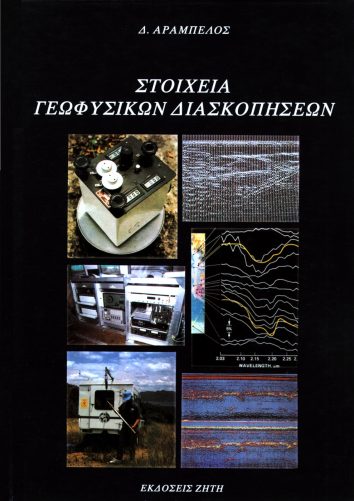
Στυλιάδης Aθανάσιος
Geographical Inforamation Systems – Συστήματα Γεωγραφικών Πληροφοριών (GIS)
Spatial Reasoning & Geomatics Engineering – Λογική του Χώρου & Γεωπληροφορική
€27,93
A geographical information system (GIS) is a computer-based information system that enables capturing, modeling, manipulation, retrieval, analysis and presentation of geographically referenced data.
The study of GIS has emerged in the last decade as an exciting multi-disciplinary subject, spanning such areas as topography & cartography, computing (computer graphics, databases), geography, photogrammetry, image processing and the environmental sciences. In particularly, the last few years have been a proliferation of GIS, employed by a wide range of users.
The growing interest in GIS reflects the fact that so much of information needed for management and decision making in government, local authorities and commerce is spatially referenced, yet conventional information technology (database systems) developed for commercial purposes is poorly suited to answering apparently simple queries framed in space and in time.
The treatment in this text book is unashamedly biased towards the computational aspects of GIS. Within information technology and computing science, GIS is a special interest of fields such as computer graphics, databases, geometric transformations, digital mapping, systems engineering and computational geometry, being not only a challenging application area but also providing open research issues for these disciplines.
The emphasis here is on understanding principles and techniques for representing, processing and visualizing spatial data in GIS application environments. The book provides a brief summary of applications of GIS and describes many of the techniques for data analysis, retrieval and graphical display that are to be found in scientific and commercial GIS applications.
This book is mainly intended for readers and students on undergraduate and master-level programmes – from computing or geomatics engineering background – who wish to learn about the issues that GIS engenders for information technology. It should also however be of considerable value to professionals using and implementing GIS in government, local authorities, industry and commerce.
Regarding the use of this text in teaching, coverage of all material presented here would be expected to extend over at least two academic semesters. It is anticipated that for teaching purposes the book will be used in combination with practical classes which provide experience of using a GIS environment (software package) to apply the methods described here. Practical exercises are also provided within the NCGIA Core Curriculum in GIS (www.NCGIA.org).
Contents
Part A: Geographical Information Science: Overview & FundamentalsChapter 1: Overview of GIS
Chapter 2: GIS Fundamentals
Chapter 3: GIS Projection Systems – Cartographical Data Modeling
Chapter 4: Geographical Data Sets – GIS Digital Data Modeling & Mapping
Part B: GIS Data Processing Chapter 5: GIS Data Sources
Chapter 6: GIS Data Capturing
Chapter 7: GIS Data Analysis
|
Part C: GIS Related Technologies: FundamentalsChapter 8: Image Processing & Analysis
Chapter 9: Digital Photogrammetry (Aerial & Terrestrial Photography)
Chapter 10: Remote Sensing
Chapter 11: Topography – Global Positioning Systems (GPS)
Part D: Conceptional & Educational (Lecturing) Support
|




